Stories about weapons. Wedge t-xnumx
It's simple. Military thought did not stand still, and the experience of the First World War showed that ordinary cavalry reconnaissance is, of course, a classic, but ... Sometimes it is not bad when reconnaissance can be carried out under conditions of certain protection of intelligence officers.
Aviation? Yes. When it is at hand and weather conditions allow. Cavalry? Yes. If there is no opposition. Armored car? Yes, it’s warmer, but the car, all the more so, weighed down by armor, will go far from everywhere.
So a portrait of a light armored vehicle on a track was drawn, armed at least with a machine gun and with anti-bullet reservation.
In short, the wedge in 20-30 of the last century was considered quite a logical means of conducting intelligence.
The command of the Red Army did not remain aloof from world currents, and also decided to adopt such a little thing. Useful, as it was believed in theory.
The basis was, as was fashionable at the time, the English wedge "Cardin-Loyd" Mk VI. In 1929, the state commission under the leadership of I. A. Khalepsky purchased a sample of wedge shoes and documentation.
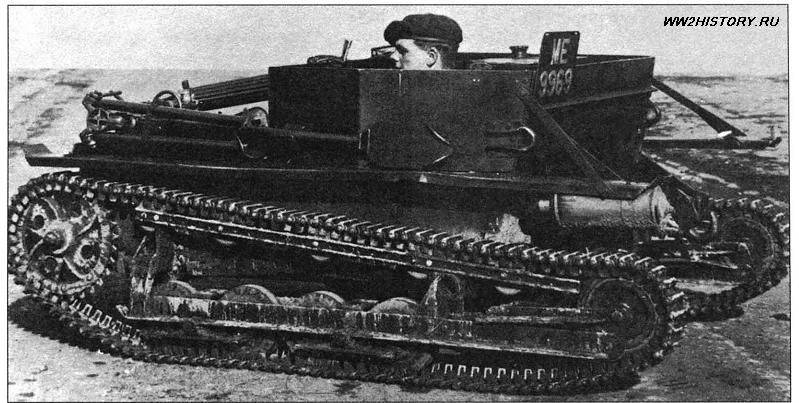
English wedge, let's say, did not shine. This was obvious even from the point of view of the un spoiled Soviet military. Therefore, if the two-strike machine gun tank T-26 was almost a complete copy of the Vickers six-ton, the T-27 was quite different from the English prototype.
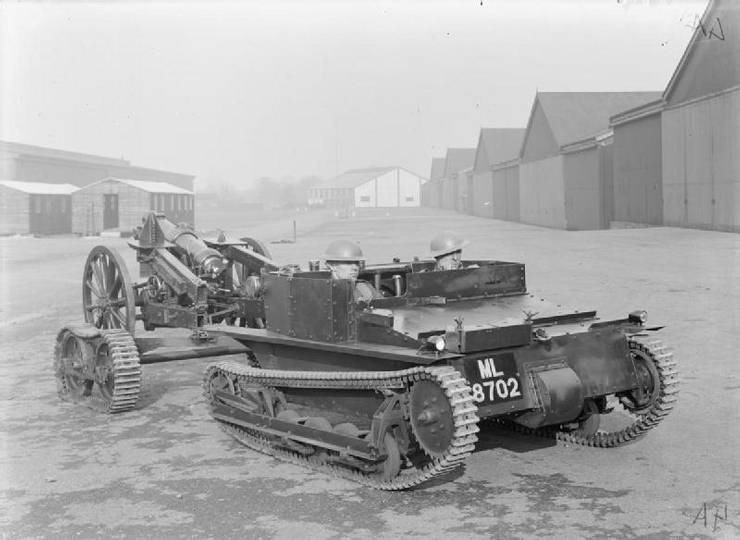
In general, "Carden-Loyd" was pretty reworked and in 1931, as the wedge T-27, was adopted by the Red Army.
The T-27 had a box-shaped body assembled from rolled armor plates on rivets. Ford's engine from GAZ-AA, HP 40 power. Soviet engineers were able to push between the places of the driver and machine-gunner. Thanks to this, it was possible to drastically reduce the length of the hull, which affected maneuverability and terrain.
In general, in the construction units and mechanisms of mass-produced Soviet cars were used to the maximum, which made the wedge shoes very inexpensive to manufacture.
They released T-27 not for long, about two years. But considering all of the above, 3342 machines have been released over these two years. T-27 were used in reconnaissance units of combined arms and tank units, were in service with the airborne brigades, where they carried out large-scale experiments on paratroop and parachute landing.
The wedge was armed with a 7,62-mm machine gun DT, ammunition which was 2520 cartridges in 40 disks.
The disks were placed in the side case boxes. For shooting, a simple mechanical sight was used. On tankettes of the first year of release, the machine gun was mounted on a special gun carriage, which provided vertical guidance of the machine gun and was connected with the lift pedal and a special sector, which theoretically made it possible to conduct anti-aircraft fire.
Subsequently, this was abandoned and the installation of the machine gun was carried out in a special flange, which provided more convenient guidance of the machine gun, both vertically and horizontally, as well as better protection of the arrow from bullets and shrapnel.
The first Soviet flamethrower tank HT-27 was created on the basis of the tanket. The fire mixture was ejected with compressed air to a distance of up to 25 meters. In the mid-thirties, light self-propelled artillery was created on the basis of the wedge, armed with a Kurchevsky 76-mm dynamo-reactive cannon, but did not go into the series, like all the “brilliant” works of Kurchevsky.
Attempts were made to install even more powerful weapons on the T-27, including the Hotchkiss 37-mm cannon and the 76,2-mm cannon, but they had to be abandoned because the chassis could not withstand the increased mass of the vehicle. Moreover, tests have shown that a light (less than 3 tons) wedge just lost stability when firing from a gun of this caliber.
In addition, in the tiny body of the wedge was not enough room to store ammunition to the gun. But what to say, the designers could not find a place to house the radio station, and it seemed that the reconnaissance vehicle was prevented from transmitting the reconstructed data.
Communication could only be carried out with other crews through flag signals. But for the Red Army of the time it was normal.
The performance of the T-27 was also not entirely unambiguous. On the one hand, a very simple and reliable design that does not require special skills and abilities to maintain. On the other hand, the permeability was below average. Narrow caterpillars did not allow easily overcome swamps, mud and deep snow.
It was also recognized that the light tank / wedge just needed a rotating tower and the ability to overcome water obstacles by swimming. So based on the T-27 and taking into account its operational experience, a light amphibious tank T-37 was created. But this is completely different. storyThe fact is that the whole family of Soviet light amphibious tanks was created based on the experience of using the T-27.
What would you do if there was nothing else? However, Guderian also developed his strategies from scratch. And nothing happened. The same happened with our tank designers.
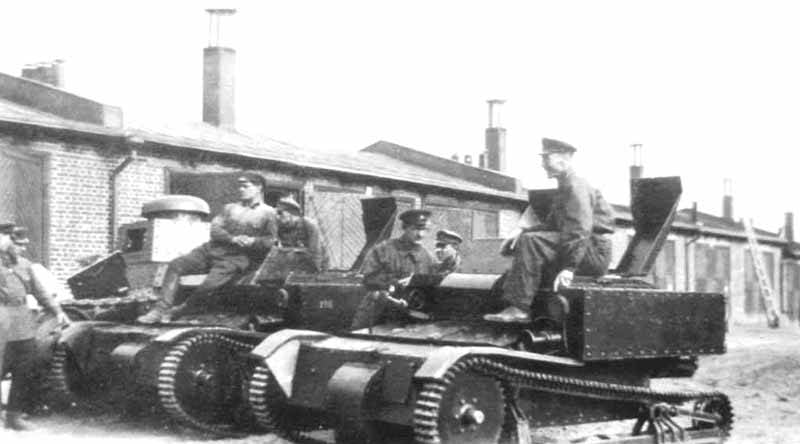
In general, by the 1933, the 65 battalions of 50 tankettes in each were formed in the armored forces of the Red Army. T-27 even managed to make war. Tankettes were very useful in suppressing gangs of basmachs in Central Asia in the 30-s.
Were tested and the possibility of landing wedges. In 1935, the air transport of T-27 tank shoes suspended from heavy bombers TB-3 was tested.
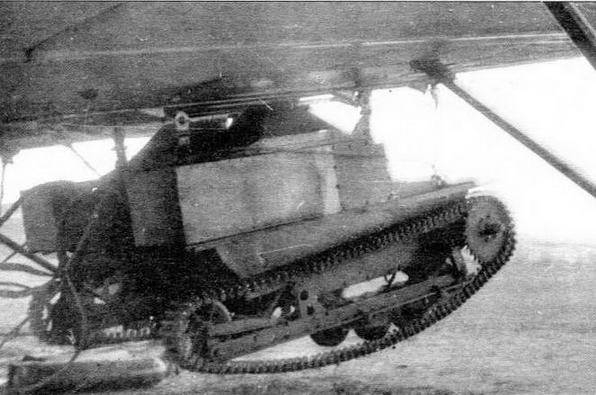
The device with which the suspension was carried out was developed by the inventor A. F. Kravtsev. With the help of this device, the T-27 tankettes were not only suspended from the aircraft, but also dropped from a low height to the ground.
By 1941, the T-27 was considered obsolete and removed from the front line. There is evidence of their use in battles in 1941, but these were simply attempts to use everything that was at hand.
If we consider the issue seriously, the combat capabilities of the T-27 wedges were small. Her armor was punched from a distance of the order of 200-300 with armor-piercing German rifle bullets of the caliber 7,92-mm, moreover, such a bullet could easily put the wedge out of action.
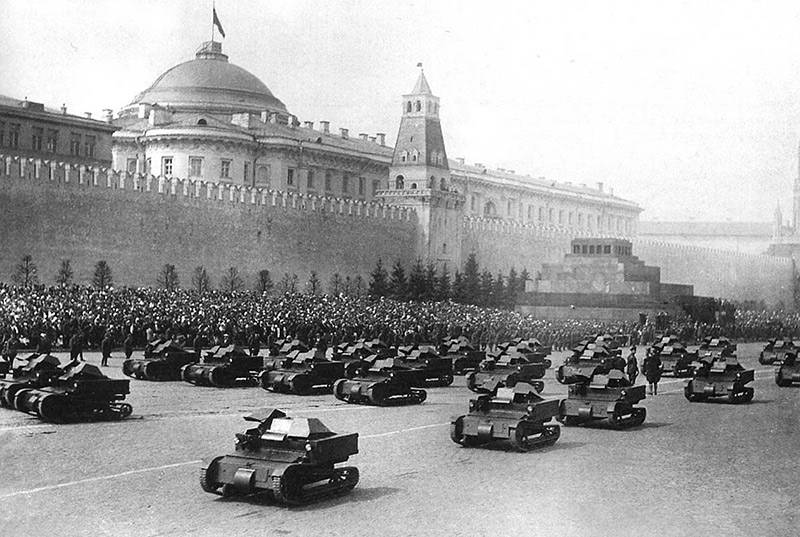
If we talk about anti-tank rifles of the type of captured Polish rifle Maroszek or our own PzB 39, not to mention the anti-tank guns, then there was no chance at all.
There was nothing to oppose, because T-27 was gradually removed from the composition of the parts.
However, this does not mean that the tank shoes were written off for scrap. The above qualities with respect to cheapness and ease of maintenance have made the T-27 quite a good artillery tractor.
In addition, the T-27 could well be used for patrols, headquarters protection, as an armored tractor and transporter. The Germans, who generally did not disdain anything that fell into their hands, used any trophies that fell to them to protect bridges, airfields, and to fight partisans.
I will not utter the phrase "for its time." The T-27 tanket, whatever it was in essence, was a kind of launching platform for the appearance of a whole family of tanks. Perhaps it was not worth it to release in such quantities, it was clearly unnecessary, but that was the general trend at that time. Gigantomania ...
But again, working with a small wedge allowed the designers to train until the creation of quite large tanks. The main thing, as they say, is to begin.
Wedge T-27. Performance characteristics
Combat weight: 2,7 t
Dimensions:
Length: 2600 mm
Width: 1825 mm
Height: 1443 mm
Crew: 2 person
Armament: 1x7,62-mm machine gun DT
Ammunition: 2500 ammo
Reservations (forehead enclosure): 10 mm
Engine: carburetor Ford-AA, hp power 40
Maximum speed: 40-42 km / h
Power reserve: 110-120 km
As I said, the base T-27 has become a testing ground for working out different machines for the purpose.
HT-27. Chemical, that is, flamethrower tank. Machine gun left. A backpack flamethrower has been added, sending fire mixture to 25 meters using compressed air. Retooled 12 machines.
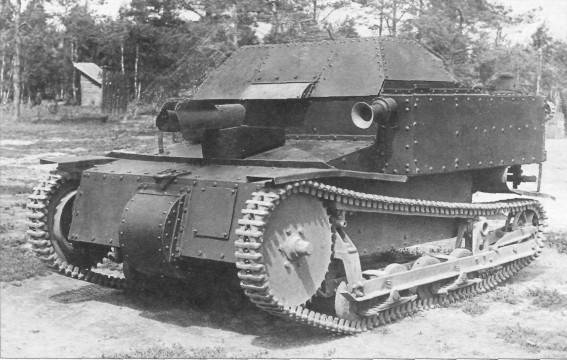
TT-27. Tele-controlled wedge. Carried a charge of explosives and remotely exploded in the camp of the enemy. It could also spray toxic substances or, on the contrary, carry out the degassing of the area. Built 5 instances.
CT-27. Project SAU with 76-mm regimental gun. The gun was mounted on the same wedge, and the ammunition and the calculation moved to another. This separation posed the threat of separation in the battle of the calculation and ammunition from his gun. The 3 prototype was released. The car was overloaded and could not move off the roads. The project has been stopped.
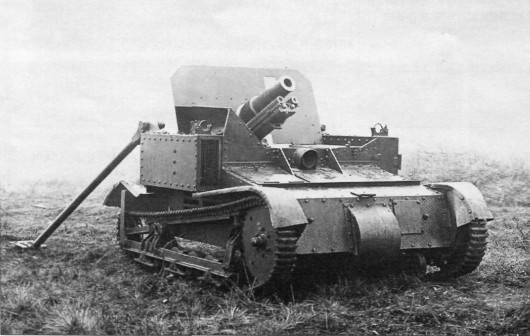
T-27 (supply wrist) On the sides of the wedge were installed two side pockets designed to transport 40 cartridge boxes (880 kg) and 24 curb machine guns.
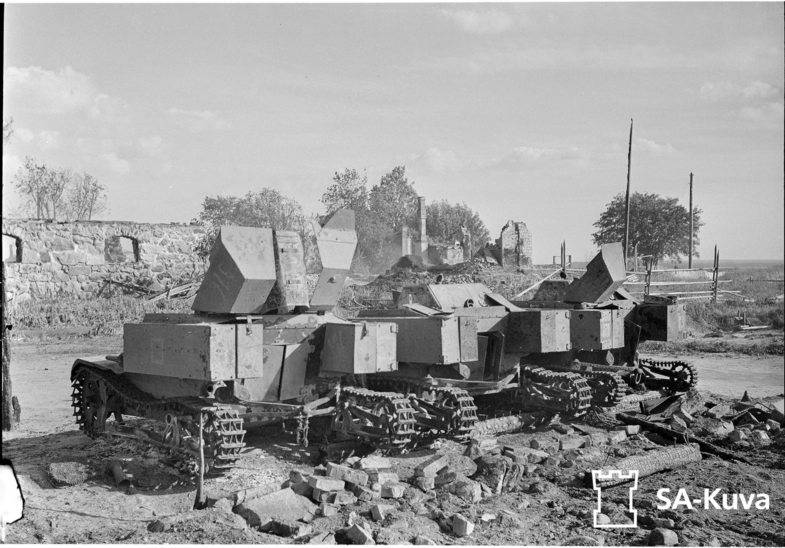
MZ-27. Minelayer. The machine gun was not removed, loaded 170 mines, laid in a drum weighing 480 kg. Issued at least 5 MZ-27.
T-27PH. An underwater walking wedge, equipped with an air intake, with a sealed enclosure and a modified exhaust pipe design. The wedge overcame water barriers at a depth of up to 3 meters and could be under water for up to 30 minutes. Made by 1 prototype.
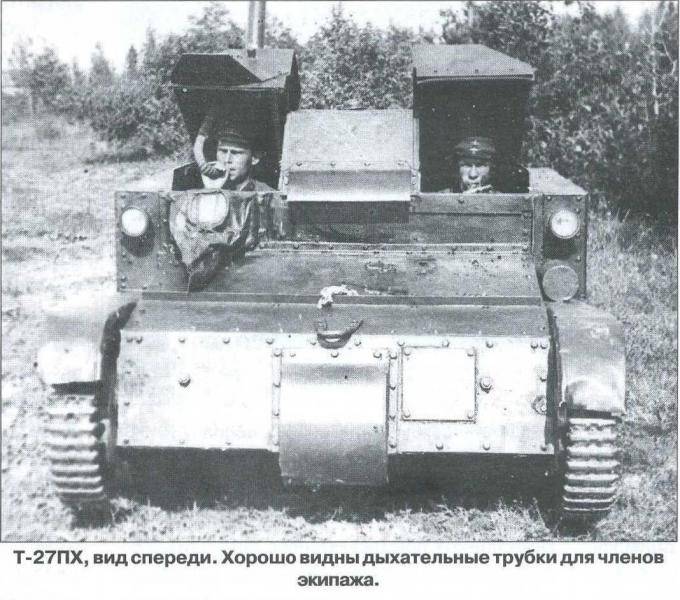
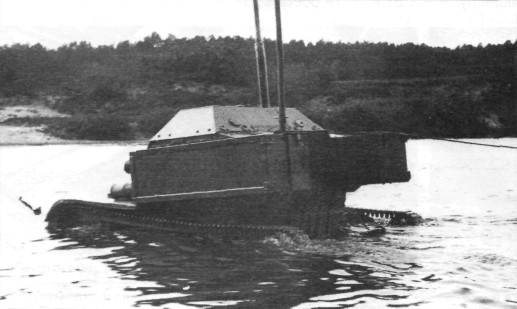
AC-T-27 is an airfield tractor based on T-27, equipped with a KAS-2 car starter for launching aircraft engines. Converted from 3 to 10 machines.
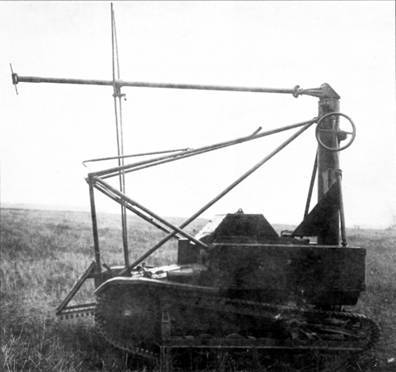
One can only wonder how much work has been done with one wedging.
Sources:
M. Baryatinsky. "Wedge T-27 and others."
M. Svirin. "Armor is strong. History of the Soviet tank 1919-1937".
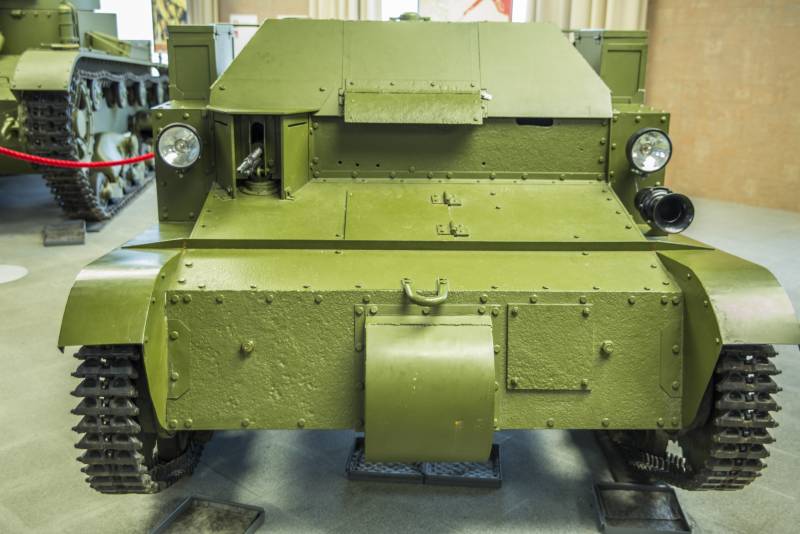
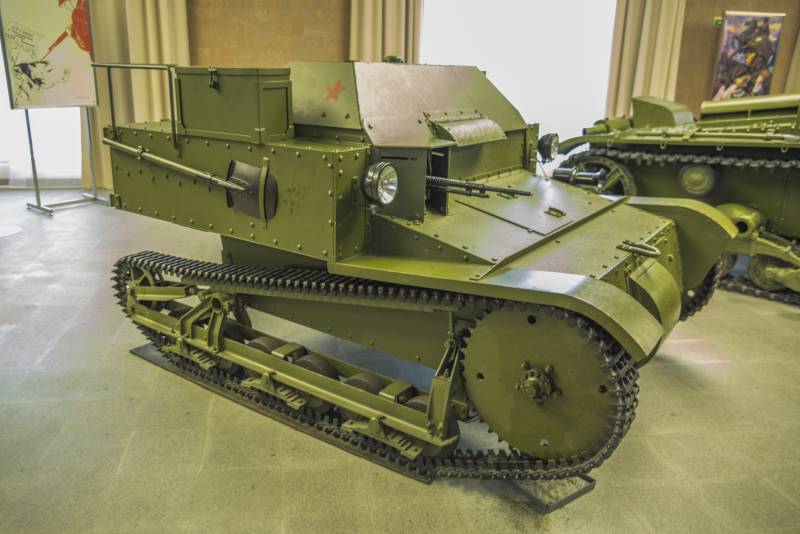
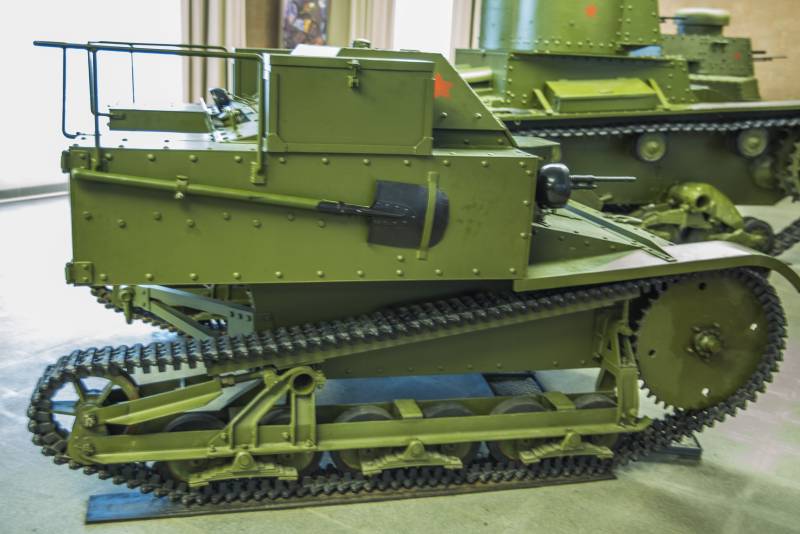
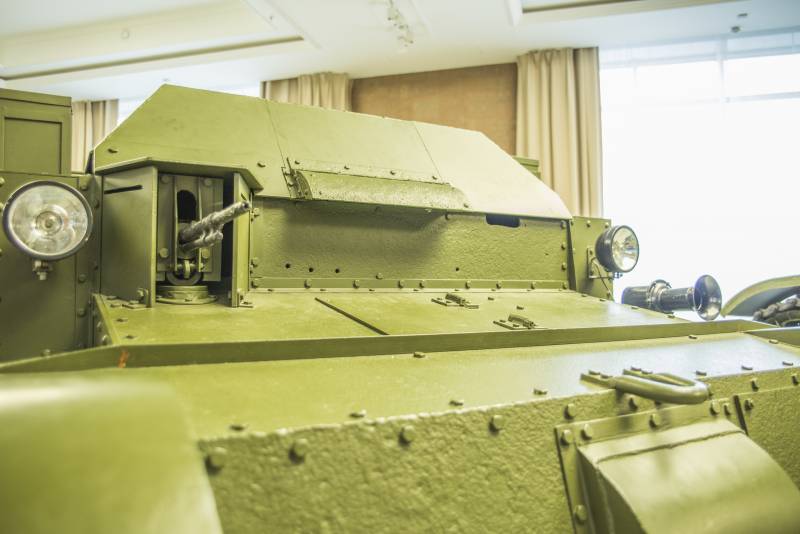
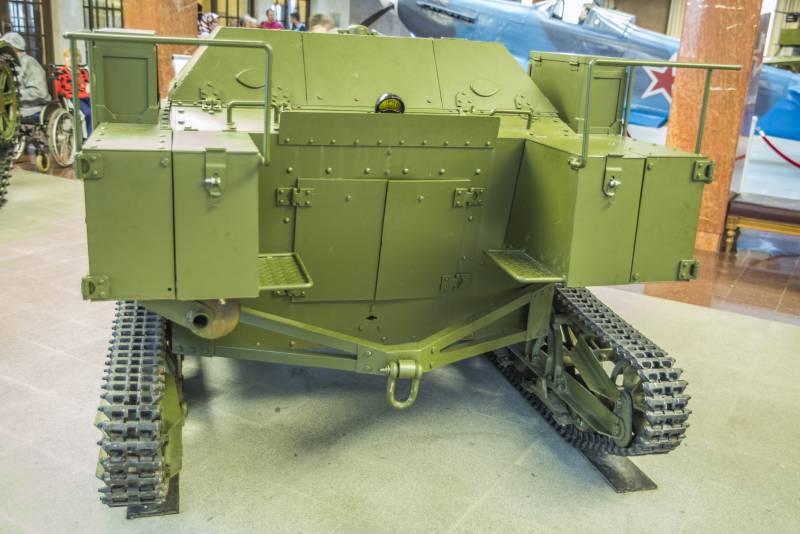
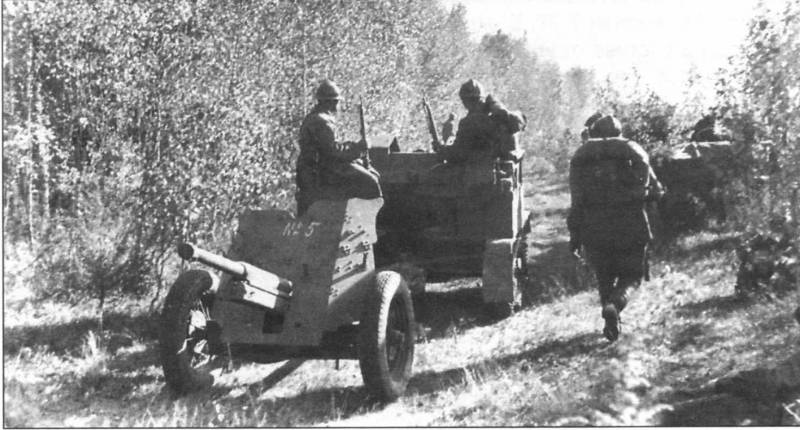
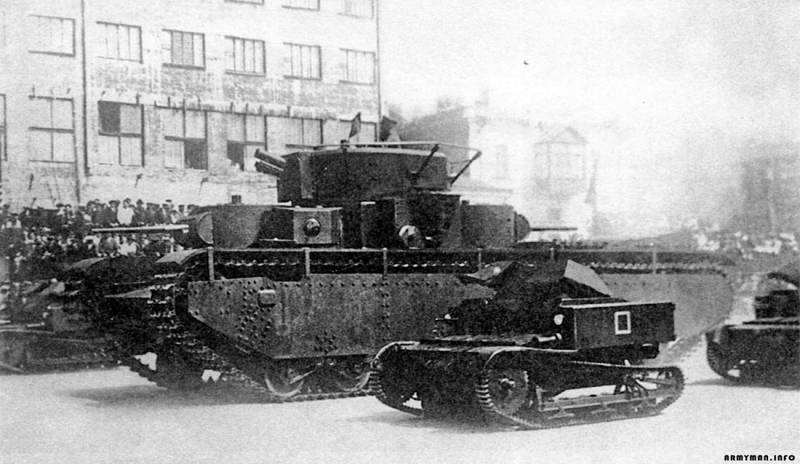
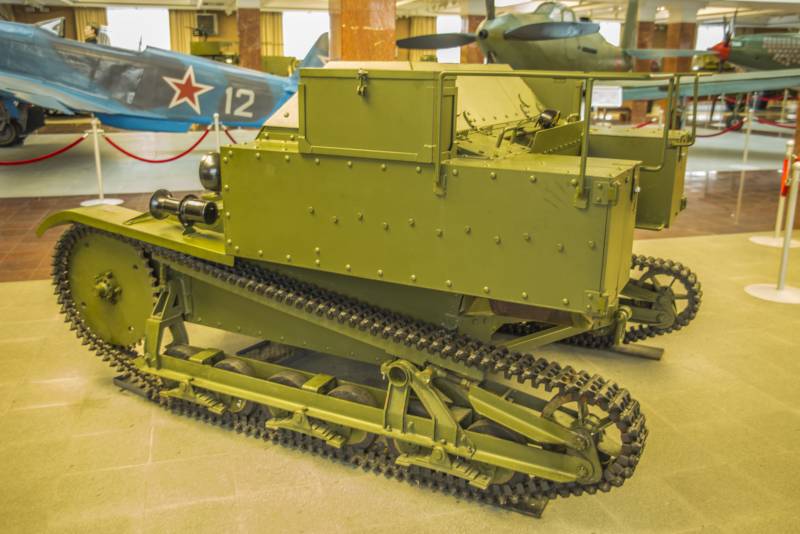
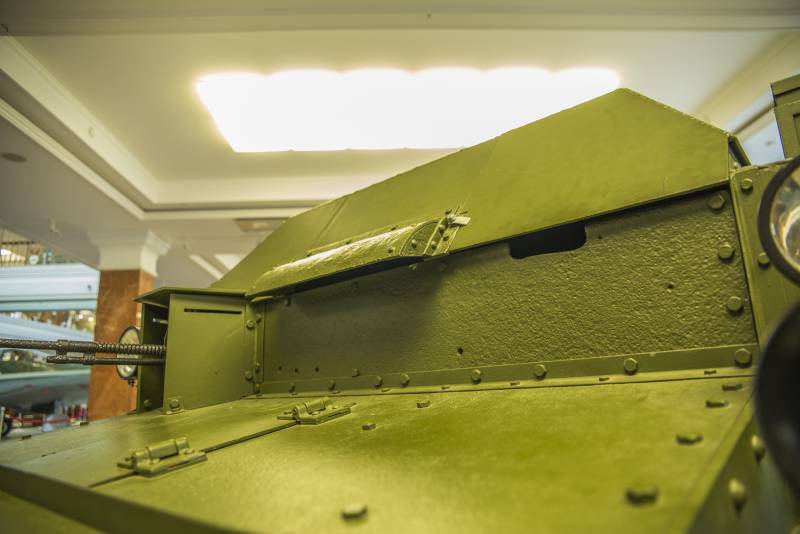
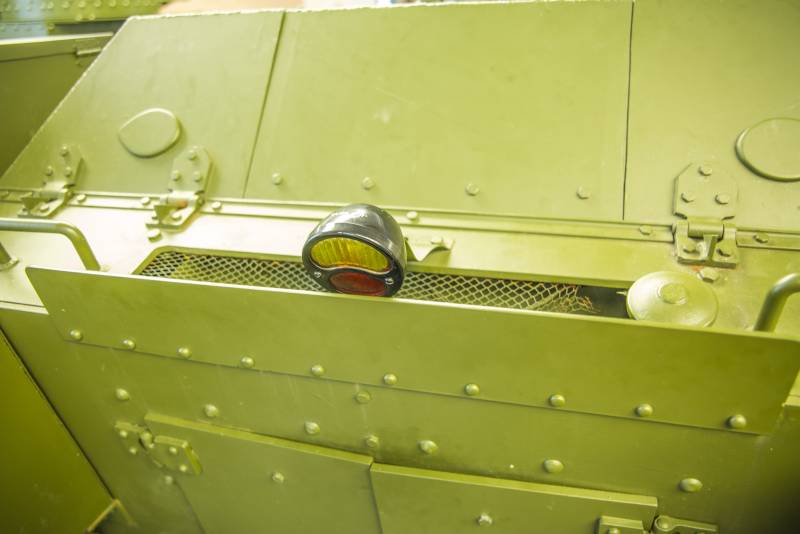
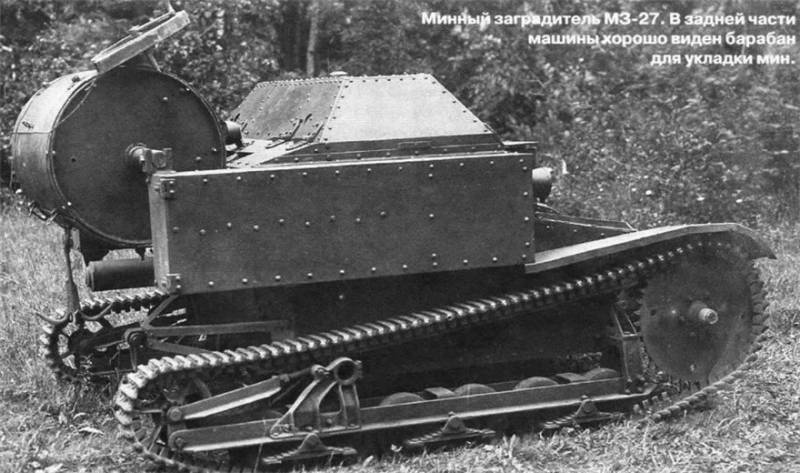
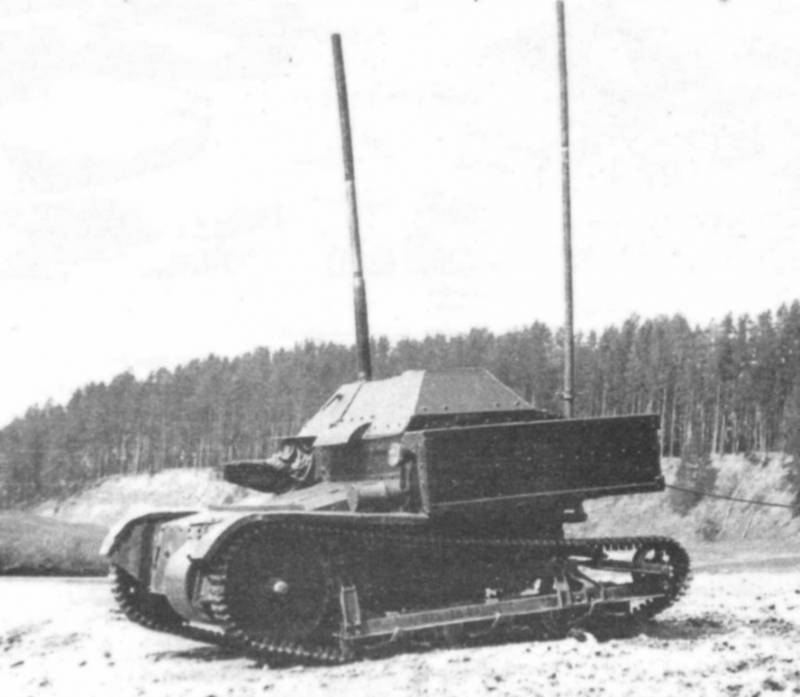
Information